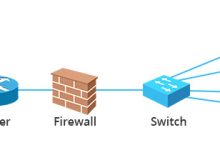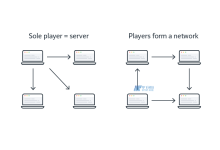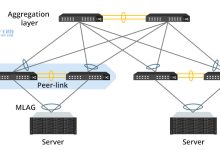在使用linux系统进行服务器管理或者其他相关操作时,常常会碰到硬限的概念。那么,究竟什么是Linux中的硬限呢?本文将从多个方面对该概念进行深入分析,并解决读者在使用Linux中遇到硬限时可能出现的疑问。
一、硬限的概念
硬限是指Linux系统内存或磁盘空间不足时,系统自动向该硬限进行限制,并发出警告信息。实际上,硬限的概念是Linux系统中非常重要的一个概念,它起到了保护系统不被占用过度的作用,从而避免在运行特定程序时出现一些不必要的错误。
二、硬限的分类
在Linux系统中,硬限大致可以分为如下三类:磁盘空间硬限、内存硬限和进程硬限。
磁盘空间硬限,顾名思义,就是磁盘空间不足所产生的硬限。当磁盘剩余空间不足时,会提示用户清理磁盘,或者修改相关设置,以增加磁盘的空间。
内存硬限是指Linux系统中的内存空间不足时,会自动向该硬限进行限制。当系统运行的程序占用了过多的内存时,就有可能出现内存硬限,并导致系统出现一些错误。
进程硬限则是指Linux系统中不能新增进程的限制,如果进程过多,会使系统承载压力过大,造成系统崩溃等情况。因此,Linux系统会自动针对用户进程进行限制,在达到一定的限制值时,会通知用户减少进程数量,以保证系统正常稳定运行。
三、硬限与软限的区别
除了硬限,Linux系统中还存在软限。与硬限不同的是,软限是在操作系统中进行程序调度时进行的限制,并没有对用户进行限制。
具体来说,软限是在进程运行时,对进程的资源使用进行限制。例如,进程在运行时只能使用特定的CPU核心或者内存大小。
也就是说,硬限在系统层面上进行限制,而软限只在进程运行时进行限制。两者区别十分明显,一定程度上可以理解为硬限用于系统维护,而软限用于进程维护。
四、如何解除硬限?
当我们在使用Linux系统运行程序时,如果遇到了硬限情况,该如何解除它呢?笔者给出以下几个实用的方法:
1. 修改资源限制值
这种方法比较常见,通过修改limit参数,来改变Linux系统中硬限的限制值。这里需要注意的是,修改限制值需要管理员权限,同时修改操作一定要谨慎,否则有可能会对系统造成不良影响。
2. 添加硬件
如果我们特定的程序需要更大的内存或磁盘空间,可以考虑添加硬件设备来解决该问题。例如,添加更多的内存条或者磁盘。
3. 卸载不必要的软件
卸载不必要的软件也是解除硬限的有效方法。如在磁盘空间不足时,我们可以对磁盘中存在的无用文件和应用进行删除,以腾出更多的空间。
5、
本文对Linux中的硬限问题进行了深入探讨,从硬限的概念、类型、与软限的区别、解除方法等方面进行了讲解。相信读者们对于硬限的概念已经有了更加深入的理解,能够在使用Linux系统时更加得心应手。当然,在实际使用中,我们仍要注意碰到硬限时的相关处理方法,积极维护好系统的稳定性。
相关问题拓展阅读:
- linux硬盘2TB限制问题
linux硬盘2TB限制问题
linux版本:
root@HWPKI-TEST-97:~# l_release -a No LSB modules are available. Distributor ID: Ubuntu Description: Ubuntu 14.04.5 LTS Release: 14.04 Codename: trusty
挂载硬盘:
root@HWPKI-TEST-96:~# fdisk -l Disk /dev/sda: 3000.6 GB, bytes 90 heads, 3 sectors/track,cylinders, totalsectors Units = sectors of 1 * 512 = 512 bytes Sector size (logical/physical): 512 bytes / 4096 bytes I/O size (minimum/optimal): 4096 bytes / 4096 bytes Disk identifier: 0x54a892f2 Device Boot Start End Blocks Id System /dev/sda+ 83 Linux
该硬盘共有州瞎sectors,但是使用fdisk分区时,只识别到sectors
这个时候如果仍使用fdisk进行分区,会有如下提示:
root@HWPKI-TEST-96:~# fdisk /dev/sda WARNING: The size of this disk is 3.0 TB (bytes). DOS partition table format can not be used on drives for volumes larger than (bytes) for 512-byte sectors. Use parted(1) and GUID partition table format (GPT). The device presents a logical sector size that is aller than the physical sector size. Aligning to a physical sector (or optimal I/O) size boundary is recommended, or performance may be impacted.
意思大概是说DOS格式分区表不能用于容量大于040 bytes(2T,粗略计算),对于
扇区
为512-byte。
此外,它还推荐使用parted(1)来进行GPT格式分区,关于 GUID Partition Table ,翻墙可查看扮伏。最后一段说逻辑扇区小于物理扇区,你需要将其与物理扇区对齐,否则表现就会不完美(美式汉语),了解一下,一会使用parted有个步骤需要对齐,册缺空原理并不懂。
这里我先忽略警告,将已经错误分区损失1T(均价400RMB)的分区删除,方法参考fdisk里的d命令,删除之后需要w保存,下面是结果:
Command (m for help): d Selected partition 1 Command (m for help): d No partition is defined yet! Command (m for help): w The partition table has been altered! Calling ioctl() to re-read partition table. WARNING: Re-reading the partition table failed with error 16: Device or resource busy. The kernel still uses the old table. The new table will be used at the next reboot or after you run partprobe(8) or kpartx(8) Syncing disks.
附上fdisk命令:
Command action a toggle a bootable flag b edit bsd disklabel c toggle the dos compatibility flag d delete a partition l list known partition types m print this menu n add a new partition o create a new empty DOS partition table p print the partition table q quit without saving changes s create a new empty Sun disklabel t change a partition’s system id u change display/entry units v verify the partition table w write table to disk and exit x extra functionality (experts only)
写入分区需要通知,删除同理:
partprobe 需要让内核知道,结果并不如我意
root@HWPKI-TEST-96:~# partprobe Error: Partition(s) 1 on /dev/sda have been written, but we have been unable to inform the kernel of the change, probably because it/they are in use. As a result, the old partition(s) will remain in use. You should reboot now before making further changes.
linux告诉我它并不能通知内核这样做,在/dev/sda上的之一分区已经使用过,这种情况在现实中我也是能理解的,原理不懂。
不想重启,所以就直接将分区卸载:
oot@HWPKI-TEST-96:~# umount /mnt
接下来的步骤按照网上的流程走,参考 DOS Partitions (fdisk) and the 2TB Limit 和parted手册 GNU Parted User Manual
,这里我们按照自己的环境操作一遍:
root@HWPKI-TEST-96:~# parted GNU Parted 2.3 Using /dev/sda Welcome to GNU Parted! Type ‘help’ to view a list of commands.
出现欢迎布拉布拉,输入help(救命啊!!)
(parted) help align-check TYPE N check partition N for TYPE(min|opt) alignment check NUMBER do a simple check on the file system cp FROM-NUMBER TO-NUMBER copy file system to another partition help print general help, or help on COMMAND mklabel,mktable LABEL-TYPE create a new disklabel (partition table) mkfs NUMBER FS-TYPE make a FS-TYPE file system on partition NUMBER mkpart PART-TYPE START END make a partition mkpartfs PART-TYPE FS-TYPE START END make a partition with a file system resizepart NUMBER END resize partition NUMBER move NUMBER START END move partition NUMBER name NUMBER NAME name partition NUMBER as NAME print display the partition table, available devices, free space, all found partitions, or a particular partition quit exit program rescue START END rescue a lost partition near START and END resize NUMBER START END resize partition NUMBER and its file system rm NUMBER delete partition NUMBER select DEVICE choose the device to edit set NUMBER FLAG STATE change the FLAG on partition NUMBER toggle > toggle the state of FLAG on partition NUMBER unit UNIT set the default unit to UNIT version display the version number and copyright information of GNU Parted
以上是parted的用法,敬请参考。
关于linux硬限是什么意思的介绍到此就结束了,不知道你从中找到你需要的信息了吗 ?如果你还想了解更多这方面的信息,记得收藏关注本站。

 国外主机测评 - 国外VPS,国外服务器,国外云服务器,测评及优惠码
国外主机测评 - 国外VPS,国外服务器,国外云服务器,测评及优惠码













